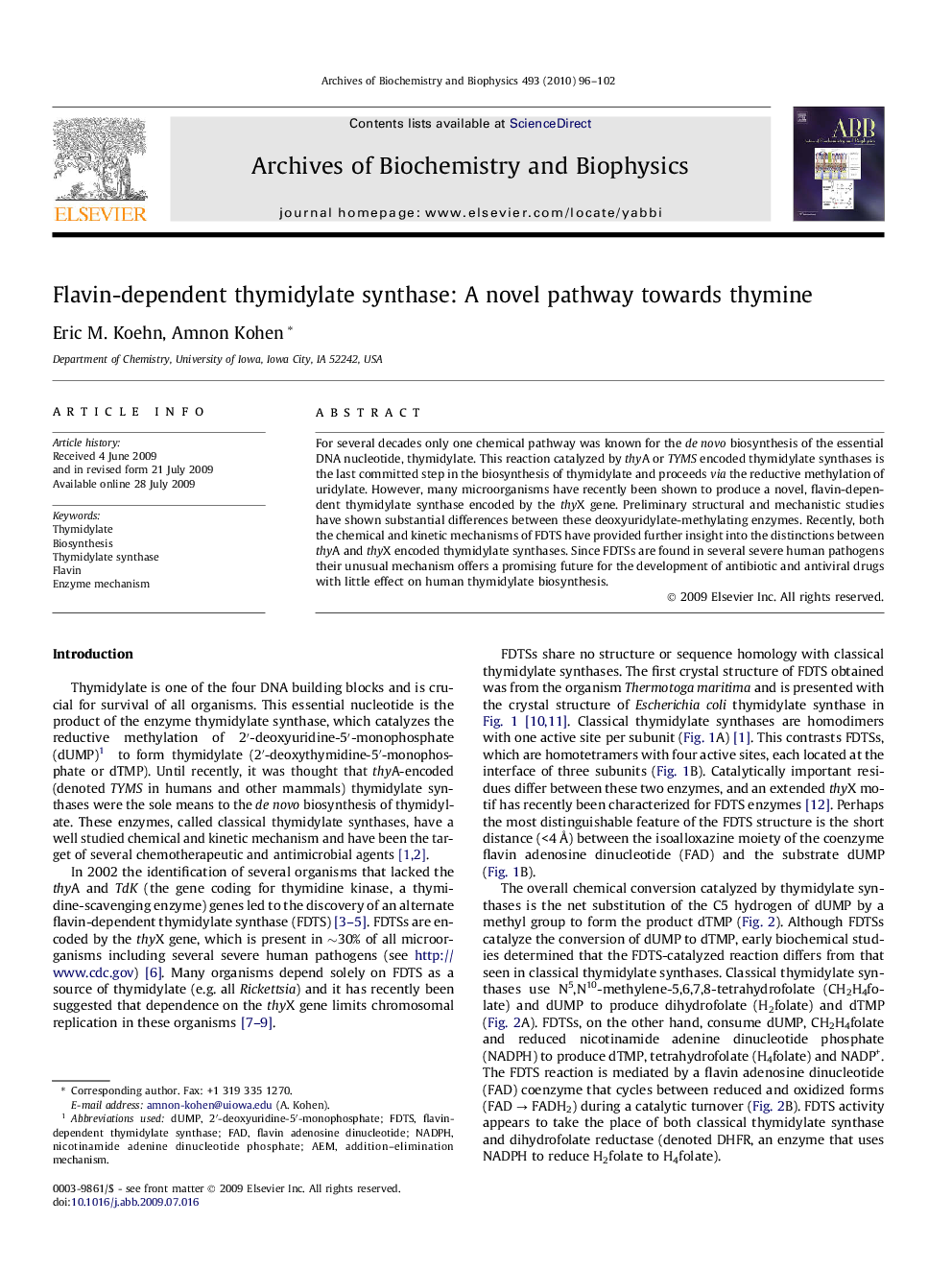| Article ID | Journal | Published Year | Pages | File Type |
|---|---|---|---|---|
| 1926199 | Archives of Biochemistry and Biophysics | 2010 | 7 Pages |
For several decades only one chemical pathway was known for the de novo biosynthesis of the essential DNA nucleotide, thymidylate. This reaction catalyzed by thyA or TYMS encoded thymidylate synthases is the last committed step in the biosynthesis of thymidylate and proceeds via the reductive methylation of uridylate. However, many microorganisms have recently been shown to produce a novel, flavin-dependent thymidylate synthase encoded by the thyX gene. Preliminary structural and mechanistic studies have shown substantial differences between these deoxyuridylate-methylating enzymes. Recently, both the chemical and kinetic mechanisms of FDTS have provided further insight into the distinctions between thyA and thyX encoded thymidylate synthases. Since FDTSs are found in several severe human pathogens their unusual mechanism offers a promising future for the development of antibiotic and antiviral drugs with little effect on human thymidylate biosynthesis.
